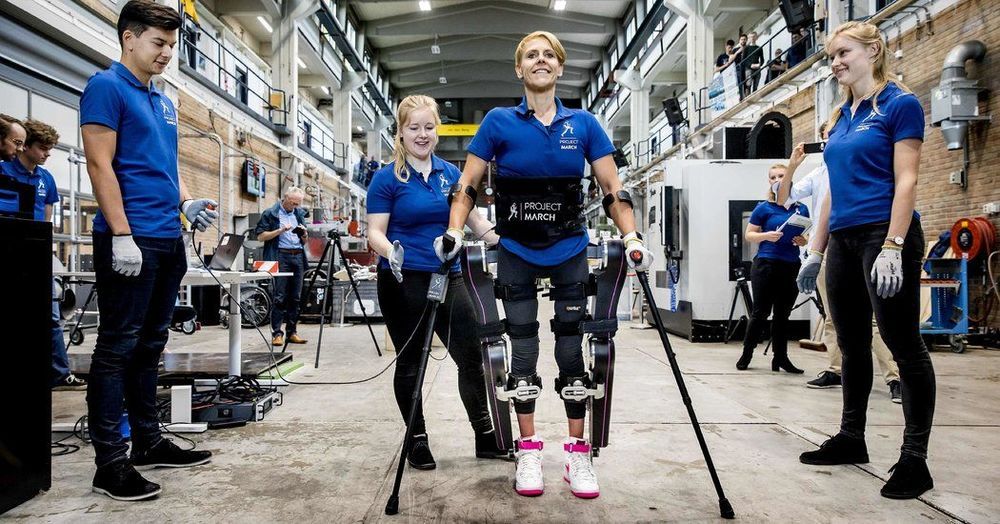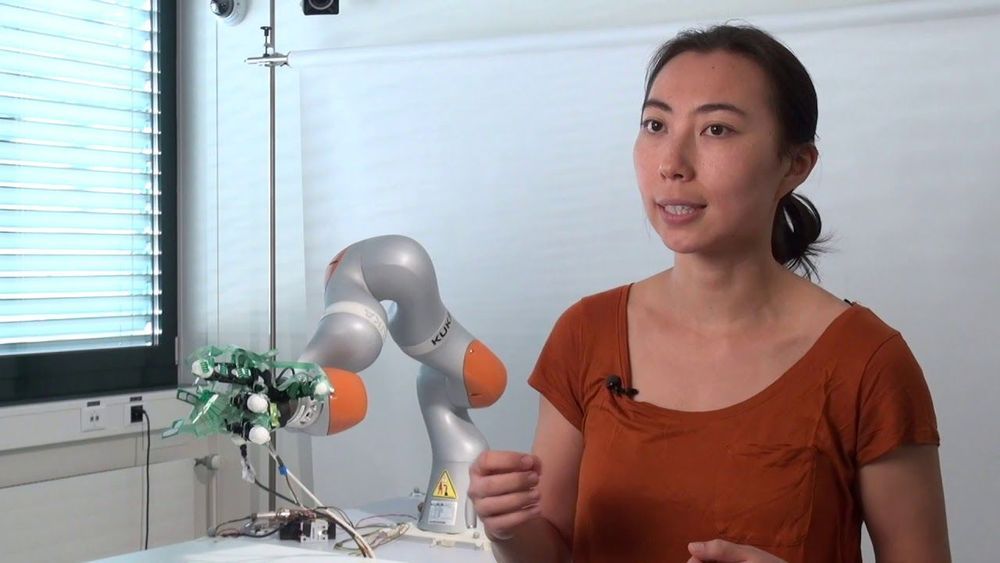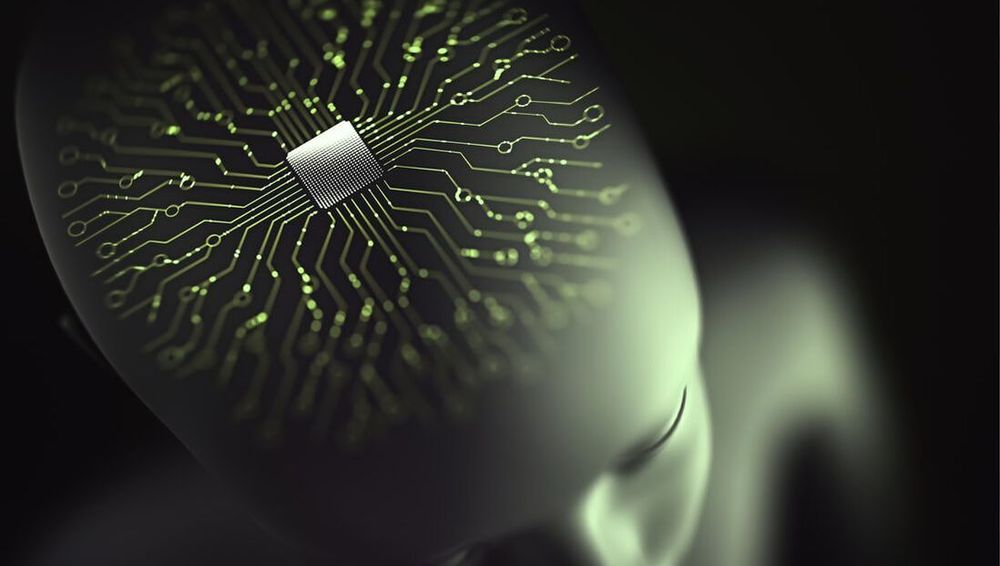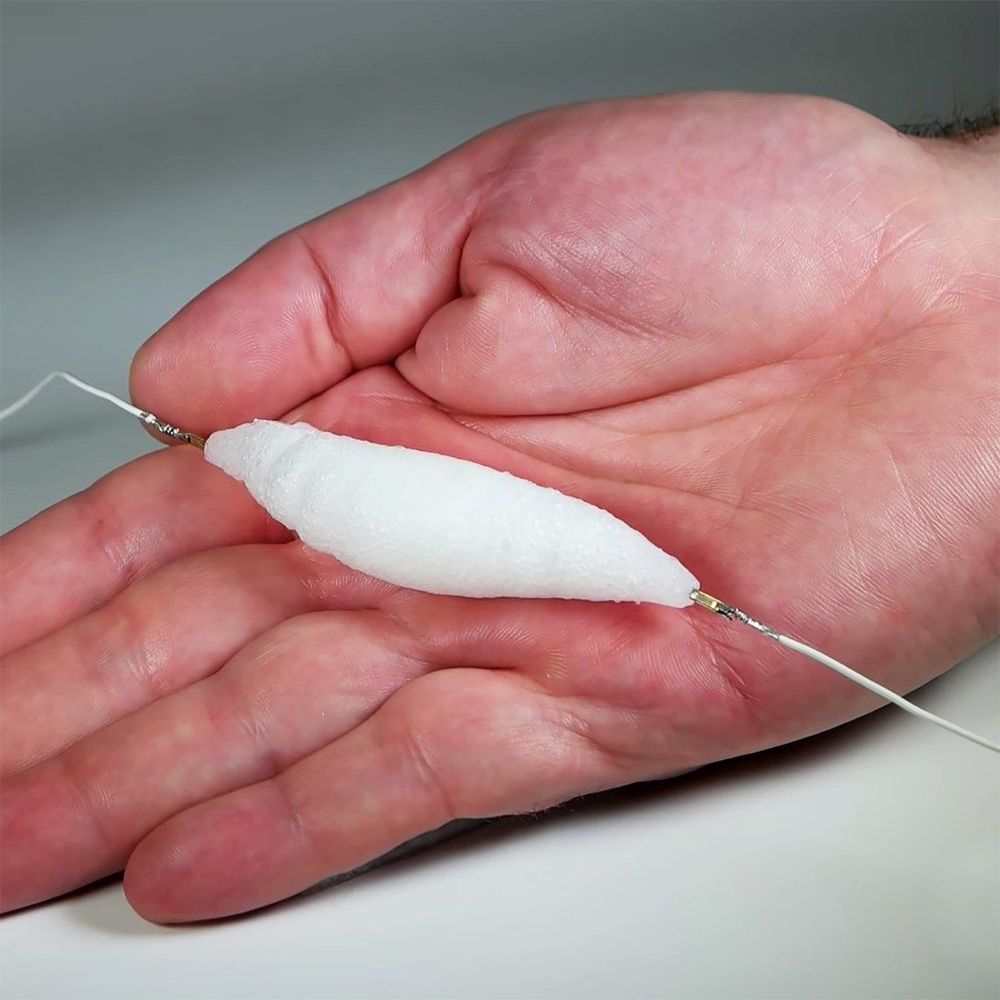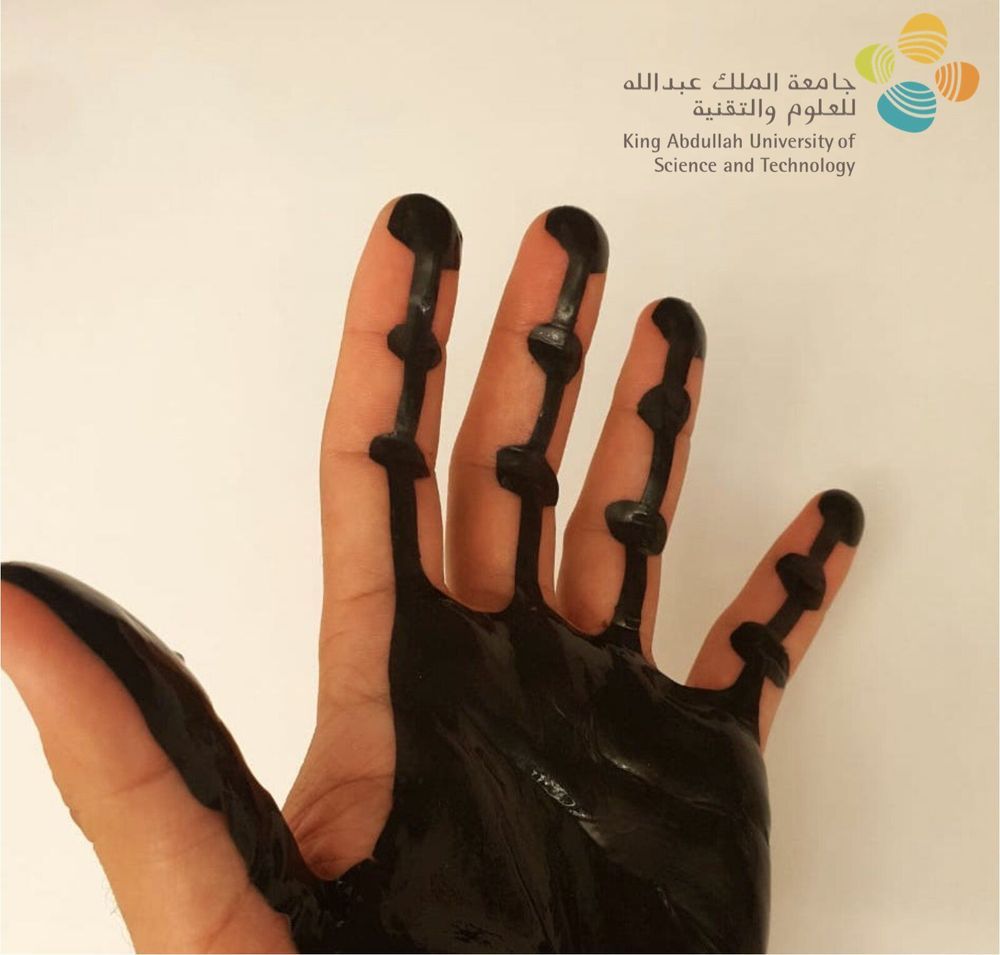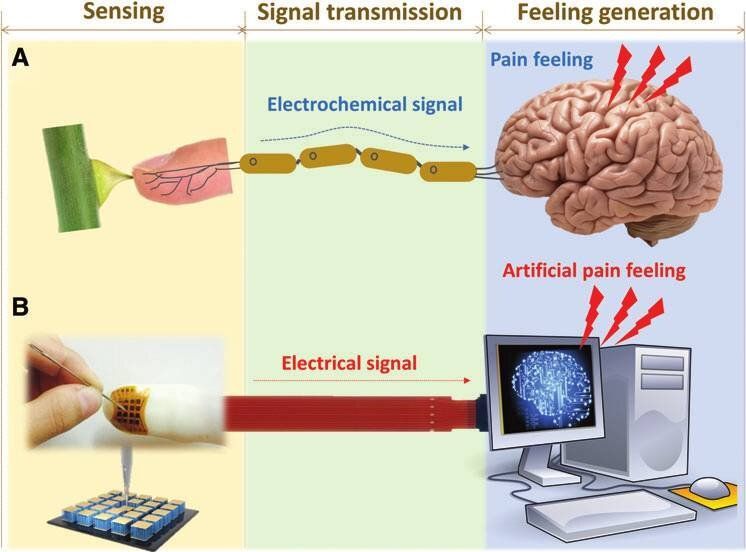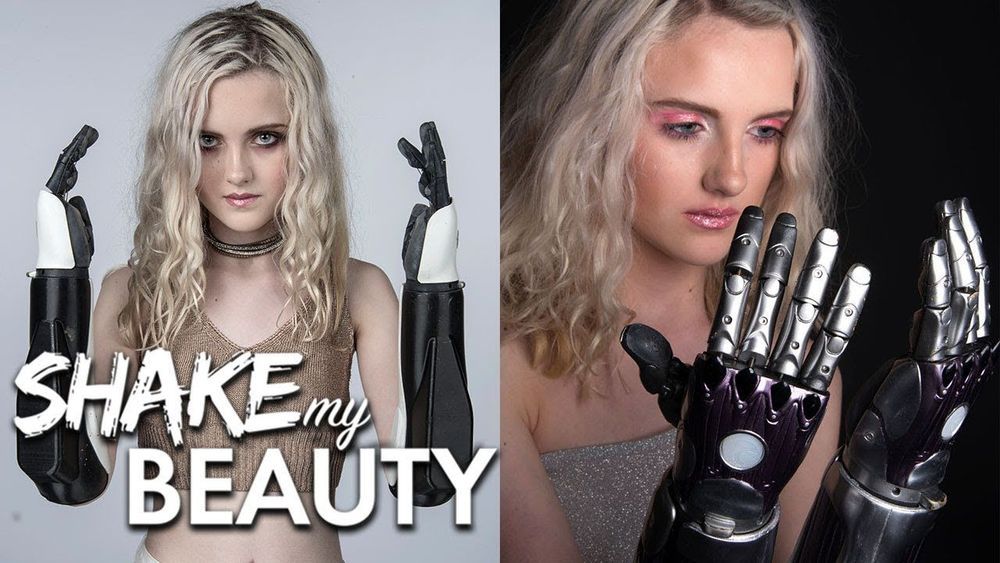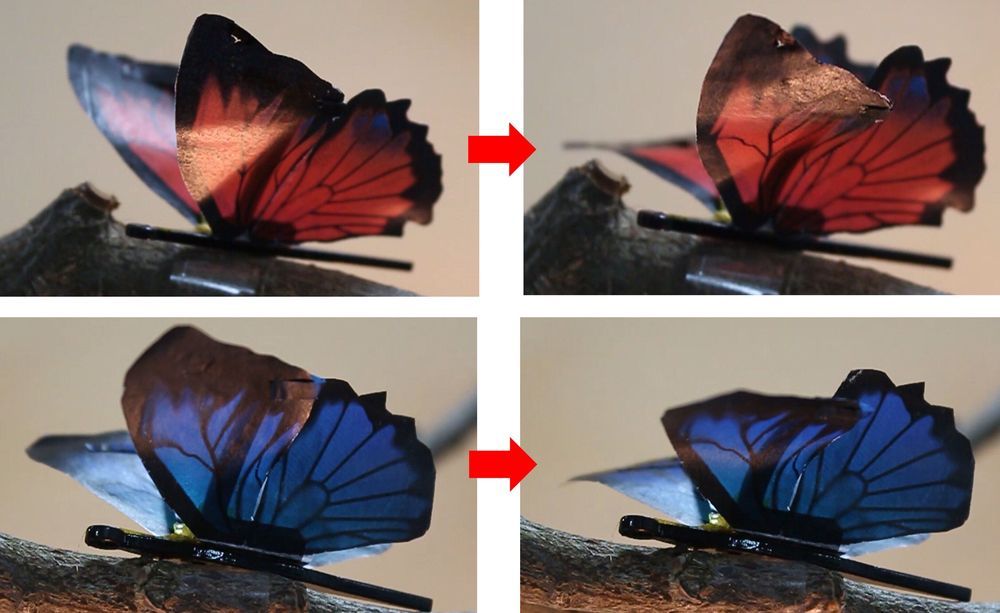Humans once mated with Neanderthals so are we hybrids? How we see ourselves and the rest of nature is changing, raising the question of whether species even exist.
Category: cyborgs – Page 72
I’m excited to share my new article for The New York Times on the brave new world of #cyborg ability and coming #transhumanism sports:
I wonder whether the sporting industry might create some new competitions where — just like technology — performance-enhancing drugs are encouraged. Innovations like the new oxygen-infused injection, which might one day allow humans to hold their breath for 15 to 30 minutes, could allow competitive free divers to reach new depths, showing just how far the human body can go.
Critics will complain that the human body was not designed to compete using enhancements and that it violates the code given to us by the ancient Greeks and their first Olympics Games, where “arête,” or excellence and moral virtue, was cherished. As a longtime competitive athlete, I appreciate the sportsmanship angle; but I also think that in the 21st century we can develop both the drugs and the technology to see humans compete in new sporting events that are even more exciting than their predecessors.
It’s hard to imagine the public wouldn’t want to see swimmers with fingers surgically webbed together to act like paddles, or weight lifters using short-lasting adrenaline shots, or 150-mile-per-hour baseball pitches thrown from bionic limbs.
EPFL scientists are developing new approaches for improved control of robotic hands—in particular for amputees—that combines individual finger control and automation for improved grasping and manipulation. This interdisciplinary proof of concept between neuroengineering and robotics was successfully tested on three amputees and seven healthy subjects. The results are published in today’s issue of Nature Machine Intelligence.
The technology merges two concepts from two different fields. Implementing them both together had never been done before for robotic hand control, and contributes to the emerging field of shared control in neuroprosthetics.
One concept, from neuroengineering, involves deciphering intended finger movement from muscular activity on the amputee’s stump for individual finger control of the prosthetic hand which has never before been done. The other, from robotics, allows the robotic hand to help take hold of objects and maintain contact with them for robust grasping.
It is a solid talk on an important message.
From cyborgs to the Sugababes, IT expert Robert Anderson talks about a world where the line between humans and machines becomes blurred. Drawing on his personal experiences of facing prejudices and bigotry while growing up, he shares his insight on how we can avoid repeating the mistakes of the past in order to create a society where humans and transhumans can live together in an open and equal manner. He urges us to take action now because as he says.
“Transhumanism is coming and it’s coming sooner than you think. We cannot afford to have the fear of the other rule this world.”
Researchers are blurring the distinction between brain and machine, designing nanoelectronics that look, interact, and feel like real neurons. Camouflaged in the brain, this neurotechnology could offer a better way to treat neurodenerative diseases or control prosthetics, interface with computers or even enhance cognitive abilities.
Electrodes implanted in the brain help alleviate symptoms like the intrusive tremors associated with Parkinson’s disease but current probes face limitations due to their size and inflexibility. In a recent paper titled “Precision Electronic Medicine,” published in Nature Biotechnology, Shaun Patel, a faculty member at the Harvard Medical School and Massachusetts General Hospital, and Charles M. Lieber, the Joshua and Beth Friedman University Professor, argue that neurotechnology is on the cusp of a major renaissance. Throughout history, scientists have blurred discipline lines to tackle problems larger than their individual fields.
“The next frontier is really the merging of human cognition with machines,” says Patel. “Everything manifests in the brain fundamentally. All your thoughts, your perceptions, any type of disease.” He and Lieber see mesh electronics as the foundation for these machines, a way to design personalized electronic treatment for just about anything related to the brain. “Today, research focused at the interface between the nervous system and electronics is not only leading to advances in fundamental neuroscience, but also unlocking the potential of implants capable of cellular-level therapeutic targeting,” write the authors in their paper.
Researchers at King Abdullah University of Science and Technology have recently developed a flexible and imperceptible magnetic skin that adds permanent magnetic properties to all surfaces to which it is applied. This artificial skin, presented in a paper published in Wiley’s Advanced Materials Technologies journal, could have numerous interesting applications. For instance, it could enable the development of more effective tools to aid people with disabilities, help biomedical professionals to monitor their patients’ vital signs, and pave the way for new consumer tech.
“Artificial skins are all about extending our senses or abilities,” Adbullah Almansouri, one of the researchers who carried out the study, told TechXplore. “A great challenge in their development, however, is that they should be imperceptible and comfortable to wear. This is very difficult to achieve reliably and durably, if we need stretchable electronics, batteries, substrates, antennas, sensors, wires, etc. We decided to remove all these delicate components from the skin itself and place them in a comfortable nearby location (i.e., inside of eye glasses or hidden in a fabric).”
The artificial skin, developed under the supervision of Prof. Jürgen Kosel, is magnetic, thin and highly flexible. When it is worn by a human user, it can be easily tracked by a nearby magnetic sensor. For instance, if a user wears it on his eyelid, it allows for his eye movements to be tracked; if worn on fingers, it can help to monitor a person’s physiological responses or even to control switches without touching them.
Professor Jae Eun Jang’s team in the Department of Information and Communication Engineering has developed electronic skin technology that can detect “prick” and “hot” pain sensations like humans. This research result has applications in the development of humanoid robots and prosthetic hands in the future.
Scientists are continuously performing research to imitate tactile, olfactory and palate senses, and tactile sensing is expected to be the next mimetic technology for various applications. Currently, most tactile sensor research is focused on physical mimetic technologies that measure the pressure used for a robot to grab an object, but psychosensory tactile research on mimicking human tactile sensory responses like those caused by soft, smooth or rough surfaces has a long way to go.
Professor Jae Eun Jang’s team has developed a tactile sensor that can feel pain and temperature like humans through a joint project with Professor Cheil Moon’s team in the Department of Brain and Cognitive Science, Professor Ji-woong Choi’s team in the Department of Information and Communication Engineering, and Professor Hongsoo Choi’s team in the Department of Robotics Engineering. Its key strengths are that it has simplified the sensor structure and can measure pressure and temperature at the same time. Furthermore, it can be applied on various tactile systems regardless of the measurement principle of the sensor.
SUBSCRIBE to Barcroft TV: http://bit.ly/Oc61Hj
A DETERMINED TEENAGER with bionic arms champions diversity by showing the world it’s ‘cool to be different.’ Tilly Lockey, from County Durham, UK had both her arms amputated at 15 months old after contracting Group B meningococcal septicaemia. The 13-year-old was the first teenager in Britain to receive a pair of the 3D-printed bionic arms in 2016. Constantly in demand for her modelling work, Tilly extensively travels the world raising awareness for meningitis — the condition which almost took her life as a baby. Follow her story here:
https://www.instagram.com/tilly.lockey/
https://www.youtube.com/channel/UC5hrVolbwN8XsWbNTRpoIMA
Barcroft TV would like to thank Debbie Todd for her photography in this video: https://www.instagram.com/debbietoddphotographer
Video Credits:
Wearing a flower brooch that blooms before your eyes sounds like magic. KAIST researchers have made it real with robotic muscles.
Researchers have developed an ultrathin, artificial muscle for soft robotics. The advancement, recently reported in the journal Science Robotics, was demonstrated with a robotic blooming flower brooch, dancing robotic butterflies and fluttering tree leaves on a kinetic art piece.
The robotic equivalent of a muscle that can move is called an actuator. The actuator expands, contracts or rotates like muscle fibers using a stimulus such as electricity. Engineers around the world are striving to develop more dynamic actuators that respond quickly, can bend without breaking, and are very durable. Soft, robotic muscles could have a wide variety of applications, from wearable electronics to advanced prosthetics.

